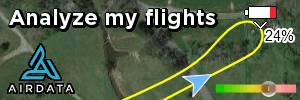WithTheBirds
Well-Known Member
- Joined
- Sep 2, 2018
- Messages
- 2,560
- Reactions
- 1,601
Your assumption, at least with respect to a polarising filter attenuating or admitting light based on wavelength is wrong. The source you copied the images from should give you the explanation.A polarized filter will cut out specific wavelengths of light so I suppose you are correct that it will cut down the amount of light reaching the sensor. However, It’s cutting out “unwanted” light rather than light at all frequencies, what an ND filter is suppose to do. That doesn’t mean you need to decrease shutter speed to still get a proper exposure necessarily though. I personally think of averaged metering as a “ball park” figure. It would require a histogram to know if you really need to add more shutter, in most cases people probably shouldn’t.
Maybe color cast isn’t the correct term, I actually took that from what you said, but it does affect color particularly greens and blues. we all know that colors are a mixture of certain wavelengths so by removing a certain wavelength, for instance with a polarized filter, we would expect a change. Clearly there is a change when using a polarized filter whether that’s suppose to be just a luminance change and not a hue change I am sure.
View attachment 87288
View attachment 87289
View attachment 87290
The reason a polarising filter can significantly reduce reflections from non metallic surfaces (allowing us to see below the surface of water, through glass etc) is because the reflected light is polarised and when the filter is correctly orientated the reflected light is largely blocked.
Despite what you seem to believe when a polariser is fitted to a lens some additional exposure will be required (over that with no filter). That is an inescapable fact.











